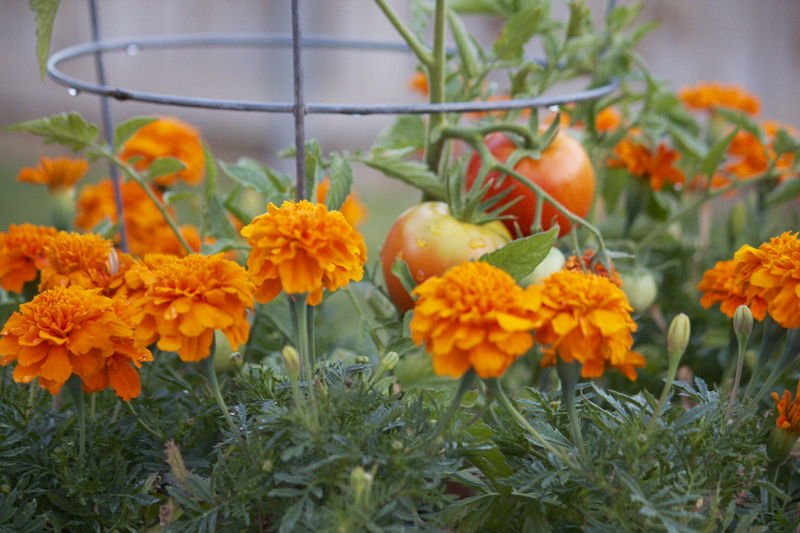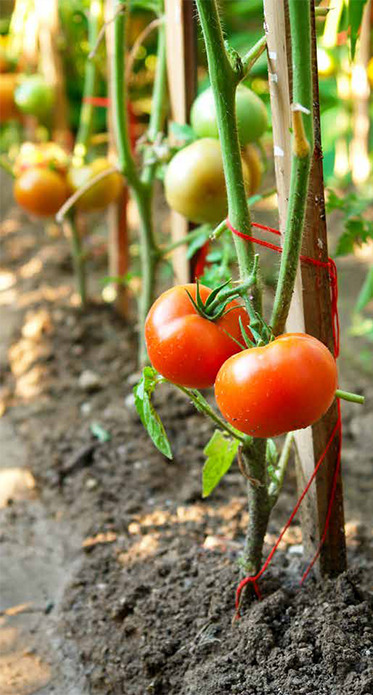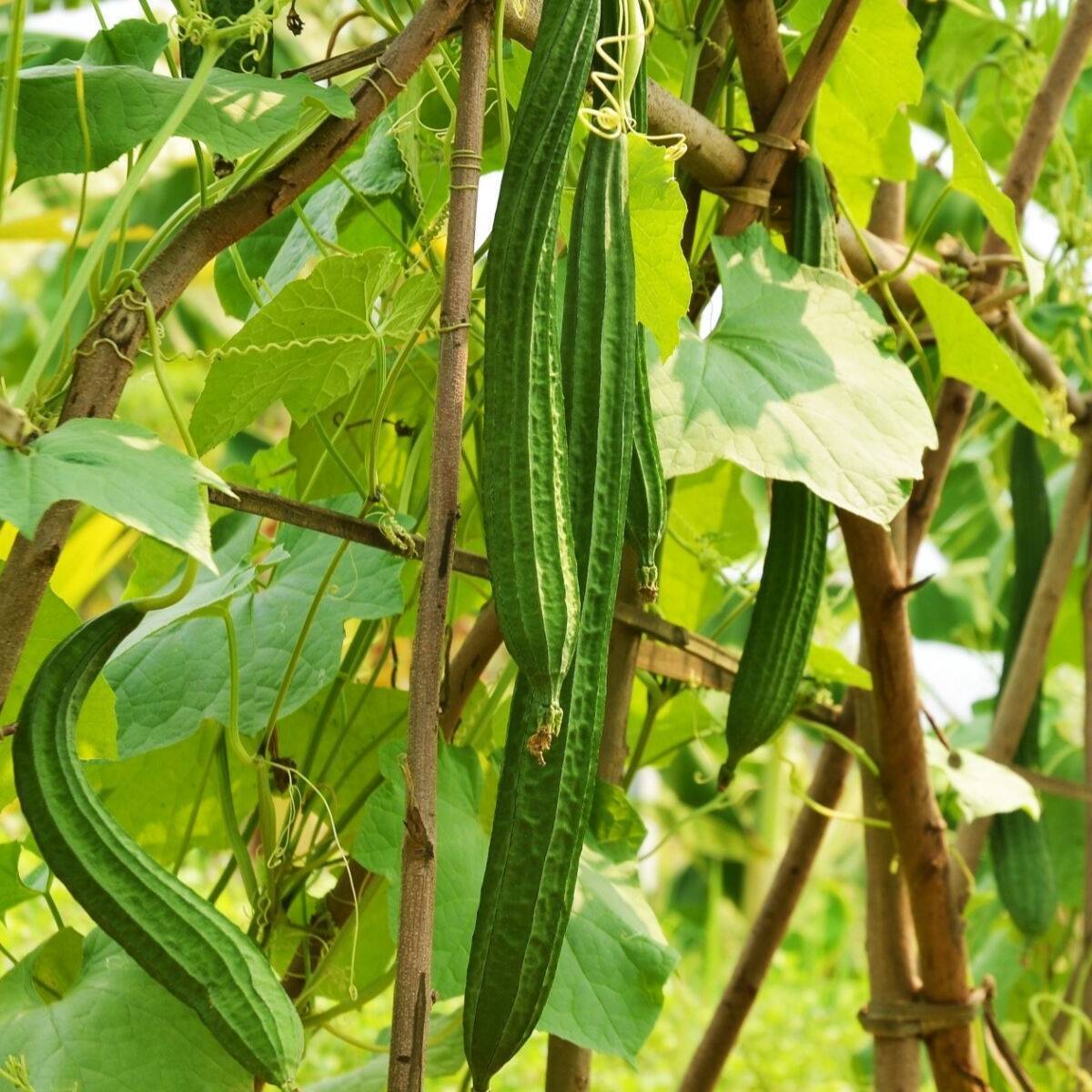Grow More Ridge Gourds With These Companion Plants
Ridge gourds are a delicious and versatile vegetable that can be eaten fresh, cooked, or dried. They are also a relatively easy crop to grow, but there are a few things you can do to help them thrive. One of the best ways to improve your chances of success is to plant companion plants with your ridge gourds.
Companion planting is the practice of planting different types of plants together in order to benefit each other. There are many different companion plants that can be beneficial for ridge gourds, but some of the most popular include:
- Radishes: Radishes have a strong root system that helps to aerate the soil and break up compacted clay. This can help to improve drainage and root growth for your ridge gourds.
- Beans: Beans are nitrogen-fixing plants, which means they can add nitrogen to the soil. This is beneficial for ridge gourds, which are heavy feeders.
- Marigolds: Marigolds are known for their insect-repelling properties. They can help to keep pests away from your ridge gourds, such as aphids, squash bugs, and cucumber beetles.
- Coriander: Coriander is another herb that has insect-repelling properties. It can also help to improve the flavor of your ridge gourds.
- Catnip: Catnip is a beneficial companion plant for many different types of vegetables, including ridge gourds. It can help to attract beneficial insects, such as ladybugs and lacewings, which can help to control pests.
In addition to these specific companion plants, there are a few general principles that you can follow when companion planting ridge gourds. First, it is important to avoid planting plants that are in the same family as ridge gourds, such as cucumbers, melons, and squash. These plants can compete for nutrients and water, and they can also be susceptible to the same pests and diseases.
Second, it is important to consider the growth habits of your companion plants. For example, marigolds and catnip are both relatively short plants, so they will not shade out your ridge gourds. Radishes and beans, on the other hand, are both vining plants, so they can be planted to help support your ridge gourds.
Finally, it is important to plant your companion plants in a way that will benefit each other. For example, you could plant marigolds and catnip around the perimeter of your ridge gourd patch to help repel pests. You could also plant radishes and beans in between your ridge gourd plants to help aerate the soil and provide support.
By following these tips, you can help to improve your chances of success when growing ridge gourds. Companion planting is a simple and effective way to boost your yields and protect your plants from pests and diseases.
Ridge gourds are a delicious and versatile vegetable that can be grown in many different climates. But did you know that there are certain plants that can help to improve the growth and health of your ridge gourds? These are known as companion plants, and they can help to deter pests, improve soil quality, and even increase yields.
Some of the best companion plants for ridge gourds include:
- Radishes: Radishes help to break up the soil and improve drainage, which can benefit ridge gourds. They also attract pests away from ridge gourds.
- Beans: Beans fix nitrogen in the soil, which can help to improve the nutrient content of the soil for ridge gourds. They also provide shade for ridge gourds, which can help to protect them from the sun.
- Marigolds: Marigolds help to repel pests, such as aphids and whiteflies, which can damage ridge gourds. They also attract beneficial insects, such as ladybugs, which can help to control pests.
If you're looking to improve the growth and health of your ridge gourds, I recommend planting some companion plants alongside them. You can find more information about ridge gourd companion plants at Gardenia Inspiration.
FAQ of ridge gourd companion plants
Q: What are some good companion plants for ridge gourd?
A: Some good companion plants for ridge gourd include:
- Beans: Beans fix nitrogen in the soil, which is beneficial for ridge gourd.
- Cucumbers: Cucumbers and ridge gourd have similar growing requirements, so they can be planted together.
- Lettuce: Lettuce helps to suppress weeds and attract beneficial insects.
- Peas: Peas fix nitrogen in the soil, and they also help to deter pests.
- Spinach: Spinach helps to suppress weeds and attract beneficial insects.
Q: What are some plants that should not be planted near ridge gourd?
A: Some plants that should not be planted near ridge gourd include:
- Melon: Melons and ridge gourd are susceptible to the same diseases, so it is best to avoid planting them together.
- Pumpkin: Pumpkins and ridge gourd are also susceptible to the same diseases, so it is best to avoid planting them together.
- Tomatoes: Tomatoes can attract pests that also feed on ridge gourd.
- Potatoes: Potatoes can harbor pests and diseases that can also affect ridge gourd.
Q: How do I plant ridge gourd with companion plants?
A: When planting ridge gourd with companion plants, it is important to consider the spacing requirements of each plant. For example, beans and cucumbers need more space than lettuce and spinach. You should also plant the companion plants in a way that they will not shade each other.
Q: How do I care for ridge gourd and its companion plants?
A: Ridge gourd and its companion plants need full sun and well-drained soil. You should water them regularly, especially during hot weather. You should also fertilize them regularly with a balanced fertilizer.
Q: What are the benefits of companion planting with ridge gourd?
A: Companion planting with ridge gourd can provide a number of benefits, including:
- Improved pollination: Companion plants can attract pollinators, which can help to improve pollination of ridge gourd.
- Reduced pest and disease pressure: Companion plants can help to attract beneficial insects that prey on pests, and they can also help to suppress the growth of weeds.
- Enhanced soil health: Companion plants can help to improve soil health by fixing nitrogen, suppressing weeds, and attracting beneficial insects.
Image of ridge gourd companion plants
- Marigolds: Marigolds are a great companion plant for ridge gourds because they help to repel pests. They also attract pollinators, which can help to improve the pollination of the ridge gourds.

- Cucumbers: Cucumbers and ridge gourds are both members of the Cucurbitaceae family, so they share many of the same growing requirements. They can also be planted together to help to improve pollination.

- Beans: Beans are a nitrogen-fixing plant, which means that they can help to improve the nitrogen content of the soil. This can be beneficial for ridge gourds, which are heavy feeders.

- Sunflowers: Sunflowers are tall plants that can help to provide shade for ridge gourds. This can be helpful in hot climates, as it can help to keep the ridge gourds cool.

- Basil: Basil is a fragrant herb that can help to deter pests. It can also be used to flavor ridge gourd dishes.

Post a Comment for "Grow More Ridge Gourds With These Companion Plants"